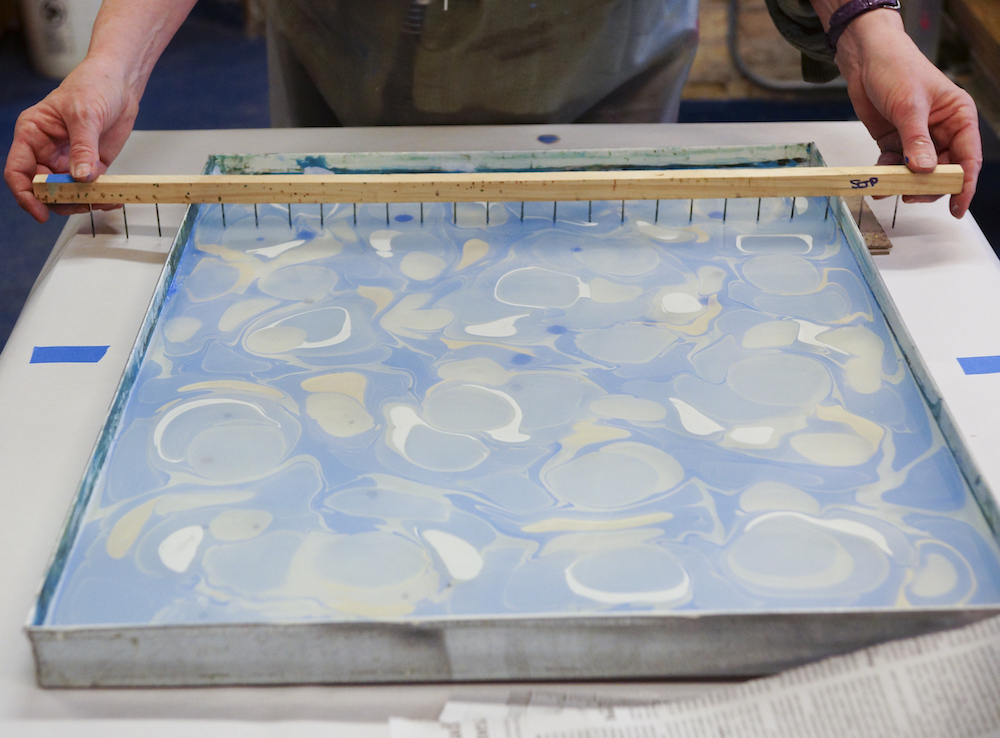Marbling has a lot of moving parts! I like to think of the process as having three main components and each of those components can affect the quality of the marbling:
- Chemistry – I see this mostly in things like how you can get “new tank” with the colors not forming smooth lines in the drops and patterns. It happens most often when the carrageenan is new and usually goes away. If you continue to get “new tank” it may be that the carrageenan is very old or the tank has been contaminated somehow. Another example of a chemical problem is managing each color’s aggression on the tank because the chemistry of different pigments effect the amount of spreading. Often this can be fixed by adding water to the paint mixture for less spread or pigment for more spread.
- Technique – How the marbler drops the paint, holds the combs, moves them, lays down the paint, etc. all effect the quality of the marbling. This is why practice and exposure to multiple marblers can really help because you will see different techniques or different aspects of the technique at different times. I remember how much it helped me to “retake” a class from my original teacher (Steve Pittelkow) after I had been marbling for a number of years. I saw things then that I didn’t take any note of when it was all new to me.
- Art – The colors you choose and how you array them is all about the art for me. It is always interesting to see what people see as beautiful and try to emulate. This is why marblers who have been working for some time can often recognize the work of other marblers by the color palate they favor. What you marble on and the patterns you use will also make your marbling distinctive.
So, when something is not going right for you, think of these components and try to determine which one (or one’s) might be the source of your problems. Like marbling, diagnosis of problems marbling is also an acquired skill and sometimes you are just having a bad day!

